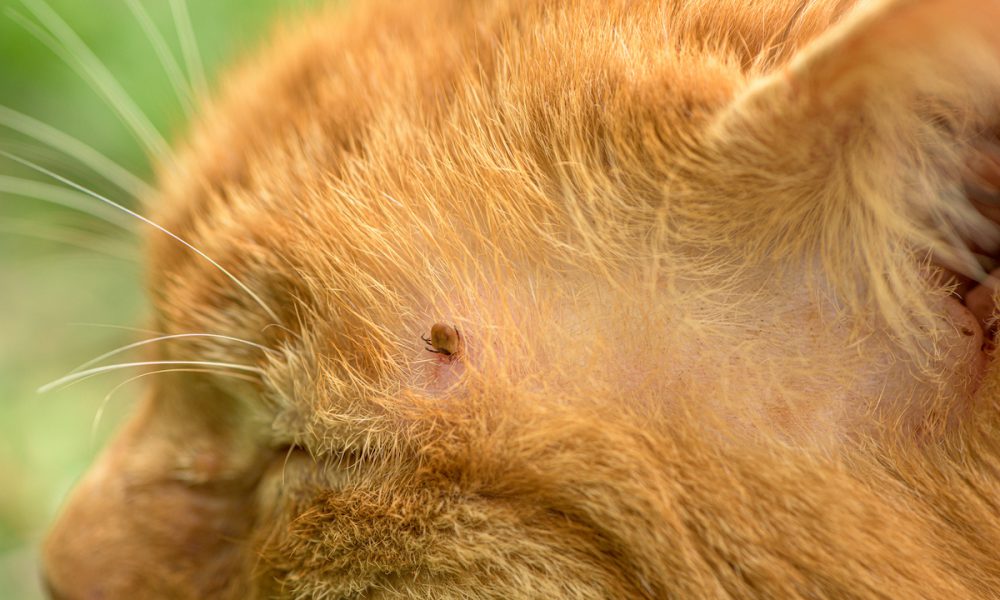
Did you know that there are an estimated 2,000 species of fleas worldwide, with more than 300 types found in the U.S.? Fleas are the most prevalent parasite found on fur-bearing animals with our dogs and cats included.
We are writing a series about these fleas that most affect us in the United States:
What is a Cat Flea?
Another name for cat flea is Ctenocephalides Felis which is the most common domestic flea.
Cat fleas are by far the most common, abundant, and widespread flea species on the planet. Cat fleas aren’t the only species of flea that can be found on domestic cats (and dogs too), but they are definitely the most annoying and hard to get rid of.
The number one source of cat fleas is newly hatched adult fleas that come from your house or yard, where they lie in wait until your pet walks by.
Diseases
Cat fleas carry a number of diseases and conditions that can be harmful to both cats and humans. Here are some of the diseases / conditions:
- Cat flea rickettsiosis, which has symptoms similar to murine Cat flea rickettsiosis can also infect humans. It includes symptoms like headaches, chills, fever, vomiting, and rash. Specifically Rickettsia typhicauses these clinical signs and is often asymptomatic in cats.
- Tapeworm – Cat fleas act as a host of both dog and cat tapeworms and can transmit them to both pets and humans.
Cat Flea Lifecycle
Normally, a cat flea can complete its entire lifecycle in just two weeks. In adverse conditions, the lifecycle of the cat flea can take upwards of one year. Cat fleas thrive in warm, humid environments, so if they make it into your nice, warm home they can be difficult to control.
Cat fleas have four distinct stages in their lifecycle:
- Eggs
- Larvae
- Pupae
- Adult
Adult fleas spend their entire lives on your pet eating, living, and mating before the female produces eggs that eventually fall off into the environment, where they hatch into larvae. Female cat fleas lay between 20 to 50 eggs per day. These eggs hatch in 2 to 5 days. Once adult fleas have hatched, they will sniff out a host (your cat, dog, or another pet) and start the entire process over.
Problem areas in the home where fleas can congregate include pet beds, pet furniture, floor mats, and other areas where your pet spends most of its time. Even if you look for fleas in your home, they are so tiny that you probably will not be able to see them. So how can you identify if your cat has fleas?
Identification and Removal of Cat Fleas
Cat fleas thrive in a warm, moist, safe haven that exists in a cat’s furry coat. Two of the main ways to tell if fleas are making a meal out of your cat or pet is to take note of whether they are scratching or biting their skin and fur.
Fleas regurgitate digestive juices onto the skin of a bite site while they suck blood from their prey, and sometimes cats and dogs can have serious allergies to this juice. This allergy is called fleabite allergic dermatitis and can be developed over the course of a dog, cat, or human’s lifetime.
Cats that are allergic to flea bites will exhibit excessive grooming and scratching from just a single bite. It’s also characterized by intense itching, hair loss, reddening of the skin, and secondary infections. The reaction and itching can persist for up to five days.
If you suspect your cat has fleas, check the skin around the base of its tail or under the armpits for tiny, moving black dots. If you find them, you’ll need to treat your pet and your home.
You can also use a flea comb to comb your animal and look for flea “dirt” which can alert you to an infestation even without seeing live fleas.
Preventing Cat Fleas and Treating Your Home
The best way to keep cat fleas from coming into your home or on your pet is by not giving them a chance in the first place. In your home and yard you can prevent a cat flea infestation by regularly cleaning out the areas where your pet rests. Contact a pest control company to treat your home and yard.
A Special Danger to Kittens
On top of the diseases that fleas can carry and transmit to your cat, they pose a space danger to kittens:
- anemia
- toxic reactions to flea dips
Be careful to treat a litter of kittens for fleas. Talk with your vet about what to do for them.
Please let our team of professionals help you with fleas in your home and property. Don’t spend your valuable time dealing with things that we can handle for you. If you’re in any of the surrounding areas, give Proactive Pest Control a call at 770-800-PEST or 770-800-7378.
Contact Us
Choose Proactive Pest Control for professional, comprehensive, guaranteed pest, and lawn management. The pros at Proactive will work diligently to gain your trust, confidence, and your total satisfaction. CALL US TODAY at 770-800-PEST to schedule a free, no obligation inspection and evaluation for your home or business. Or, contact us for a FREE consultation. Let us show you why Proactive Pest Control is northeast Georgia’s first choice for pest, termite, and lawn services.